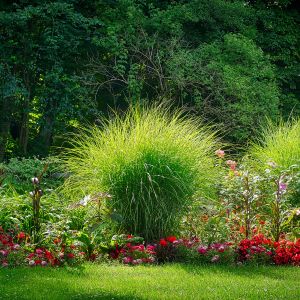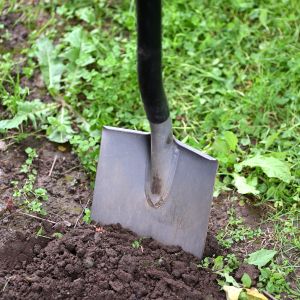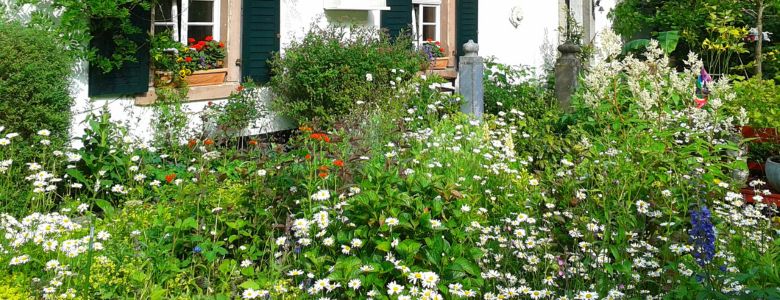Imagine a lush, vibrant garden replacing your conventional lawn, where beauty meets sustainability and wildlife thrives. This transformation not only reduces maintenance costs but also promotes eco-friendliness and energy conservation. Discover how you can turn your lawn into a thriving garden paradise.
Why Choose a Garden Over a Lawn?

In regions with limited water resources like semi-arid and arid areas, a thoughtfully designed, water-efficient landscape can outshine traditional lawns. It brings a sense of homeliness and natural beauty that thrives within the constraints of nature. Even in regions blessed with ample rainfall, replacing some or all of your lawn with diverse plantings offers numerous benefits, from expanding wildlife habitat to simplifying maintenance.
Why Make the Change?
Water and Energy Conservation: Did you know that the average suburban lawn consumes a staggering 10,000 gallons of water annually, not counting rainfall? This seemingly innocuous green expanse indirectly contributes to energy consumption. Reducing your lawn’s water needs not only conserves water but also saves energy expended in pumping, heating, treating, and delivering water.
Optimal Location: If your lawn occupies challenging terrain, such as slopes or shaded areas, consider transitioning it into a low-maintenance landscape. Avoid the hassle of uneven lawns or challenging mowing tasks by allowing trees, shrubs, and leafy plants to intercept rainwater and reduce runoff.
Wildlife Haven: Support local wildlife by creating a multi-layered environment with native trees, fruit-bearing shrubs, vines, ground grasses, and perennials. Birds, butterflies, and beneficial insects will be drawn to your garden’s diverse ecosystem.
Time and Cost Savings: With the average homeowner dedicating 150 hours annually to lawn care, it’s no wonder that the no-lawn-maintenance movement is gaining momentum. Depending on your plant selection and whether you incorporate low-maintenance ground covers like gravel, maintaining a garden can take between 25 to 75 hours per year. Choosing native plants or those suited to your region’s climate and soil can also trim expenses on fertilizers and herbicides.
Who Can Help You?
Consider consulting a landscape designer or qualified landscaper who specializes in water-efficient landscaping. They can create a hydro zone with plants sharing similar water, sun, and soil requirements. Licensed landscape contractors can install drip, underground, and low-volume overhead irrigation systems.
Project Costs and Timeline:
- Design: Starting at $1,500 for a basic planting plan.
- Demolition: Depending on the lawn size and removal method, budget around $3,000.
- Planting: Costs range from $2,000 to $6,000, depending on container size.
- Irrigation: Expect to pay between $2,000 and $5,000, depending on the chosen method.
- Typical Timeline: 2-4 weeks for design and 1-2 weeks for demolition and installation.
Permits:
In most cases, permits aren’t necessary for planting projects, but for areas exceeding 2,500 square feet, check local regulations. If you plan to redo parkways or “hell strips,” ensure compliance with local ordinances.
Best Time to Begin:
Timing depends on grass removal and climate. However, tackling the project in fall or winter allows plants to establish themselves before the summer heat. Research local incentives and explore landscaping resources before you start.
How to Remove Your Grass:

Eliminate grass without herbicides using these methods:
- Digging: Although not the most recommended method, it’s the quickest. Physically remove grass strips and compost them.
- Lasagna Method: Layer cardboard or newspaper with organic mulch to block light and water. Grass dies in about two months and can be integrated into the soil with mulch and newspaper.
Planting Your Garden:
Embrace the joy of planting! In Orchard Park, Western New York, USA, year-round planting is possible, with fall and winter being ideal for taking advantage of cooling rains. Root growth continues until underground temperatures drop below 40°F.
Get Started:
- Explore Incentives: Check if your city offers rebates for water-saving landscapes.
- Gather Ideas: Browse our reservoir landscapes photos for inspiration.
- Seek Professional Help: Find local landscape architects and contractors, or dive into our DIY resources for valuable insights.
Embark on this exciting journey to transform your lawn into a thriving, eco-friendly garden paradise. Explore our blogs and discover a world where sustainability meets beauty, all while saving time and resources.”
For more gardening tips and native plant guides in your area, visit our website

